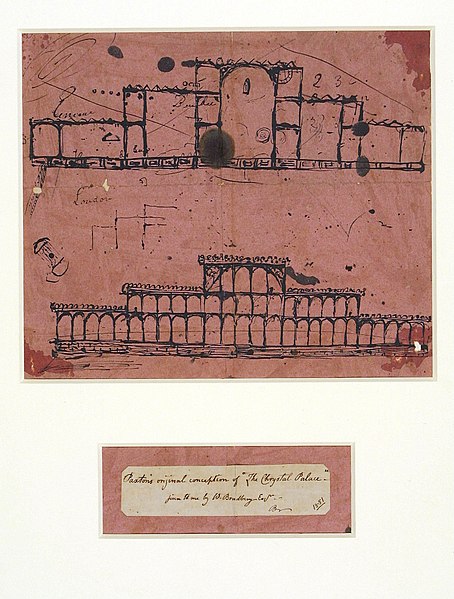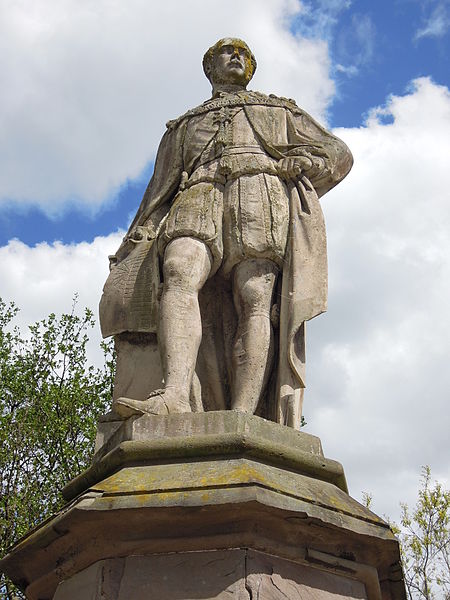Sir August Friedrich Manns was a German-born British conductor who made his career in England. After serving as a military bandmaster in Germany, he moved to England and soon became director of music at London's Crystal Palace. He increased the resident band to full symphonic strength and for more than forty years conducted concerts at popular prices. He introduced a wide range of music to London, including many works by young British composers, as well as works by German masters hitherto neglected in England. Among his British protégés were Arthur Sullivan, Charles Villiers Stanford, Hubert Parry, Hamish MacCunn, Edward Elgar and Edward German.
August Manns in 1898
Crystal Palace concert hall in 1857
1888 caricatures of Manns
The Crystal Palace was a cast iron and plate glass structure, originally built in Hyde Park, London, to house the Great Exhibition of 1851. The exhibition took place from 1 May to 15 October 1851, and more than 14,000 exhibitors from around the world gathered in its 990,000 square feet (92,000 m2) exhibition space to display examples of technology developed in the Industrial Revolution. Designed by Joseph Paxton, the Great Exhibition building was 1,851 feet (564 m) long, with an interior height of 128 feet (39 m), and was three times the size of St Paul's Cathedral.
The Crystal Palace at Sydenham (1854)
The Crystal Palace in Hyde Park for the Grand International Exhibition of 1851
Joseph Paxton's first sketch for the Great Exhibition Building, c. 1850, using pen and ink on blotting paper; Victoria and Albert Museum
An 1864 Statue of Albert, Prince Consort, holding a plan of the Crystal Palace







